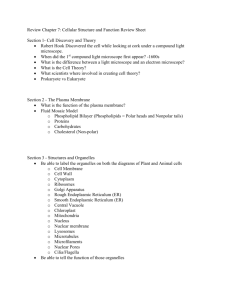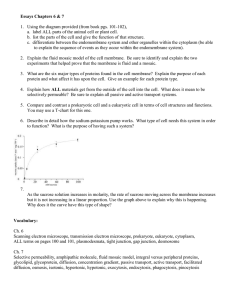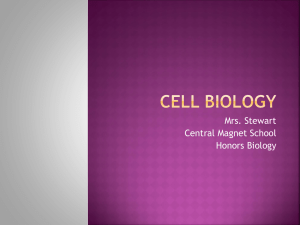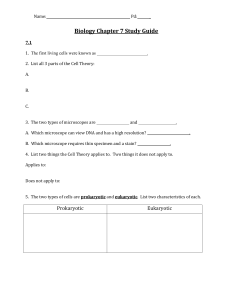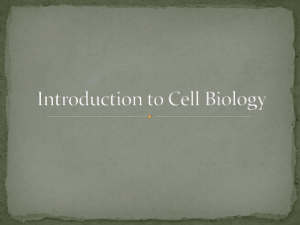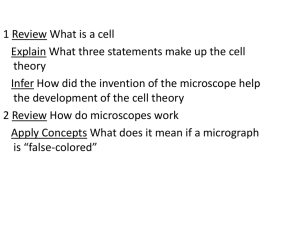AP Biology Study Guide A Tour of the Cell Chapter 7 KEY TERMS
advertisement
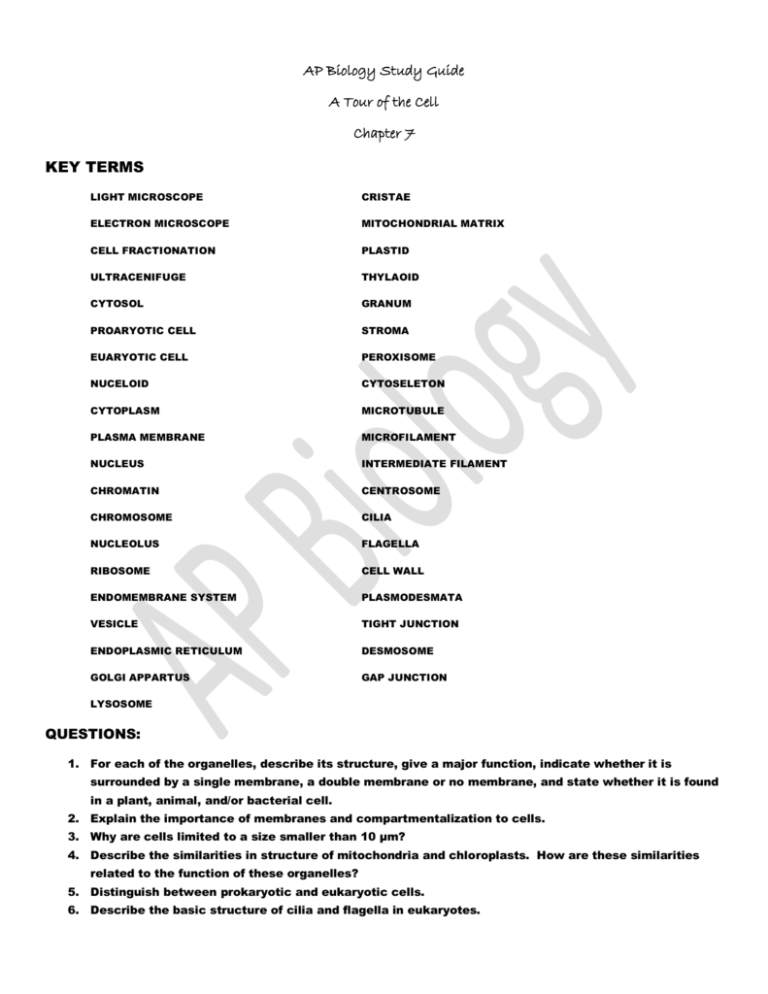
AP Biology Study Guide A Tour of the Cell Chapter 7 KEY TERMS LIGHT MICROSCOPE CRISTAE ELECTRON MICROSCOPE MITOCHONDRIAL MATRIX CELL FRACTIONATION PLASTID ULTRACENIFUGE THYLAOID CYTOSOL GRANUM PROARYOTIC CELL STROMA EUARYOTIC CELL PEROXISOME NUCELOID CYTOSELETON CYTOPLASM MICROTUBULE PLASMA MEMBRANE MICROFILAMENT NUCLEUS INTERMEDIATE FILAMENT CHROMATIN CENTROSOME CHROMOSOME CILIA NUCLEOLUS FLAGELLA RIBOSOME CELL WALL ENDOMEMBRANE SYSTEM PLASMODESMATA VESICLE TIGHT JUNCTION ENDOPLASMIC RETICULUM DESMOSOME GOLGI APPARTUS GAP JUNCTION LYSOSOME QUESTIONS: 1. For each of the organelles, describe its structure, give a major function, indicate whether it is surrounded by a single membrane, a double membrane or no membrane, and state whether it is found in a plant, animal, and/or bacterial cell. 2. Explain the importance of membranes and compartmentalization to cells. 3. Why are cells limited to a size smaller than 10 µm? 4. Describe the similarities in structure of mitochondria and chloroplasts. How are these similarities related to the function of these organelles? 5. Distinguish between prokaryotic and eukaryotic cells. 6. Describe the basic structure of cilia and flagella in eukaryotes. 7. Describe the structure of intercellular junctions found in plant and animal cells.


